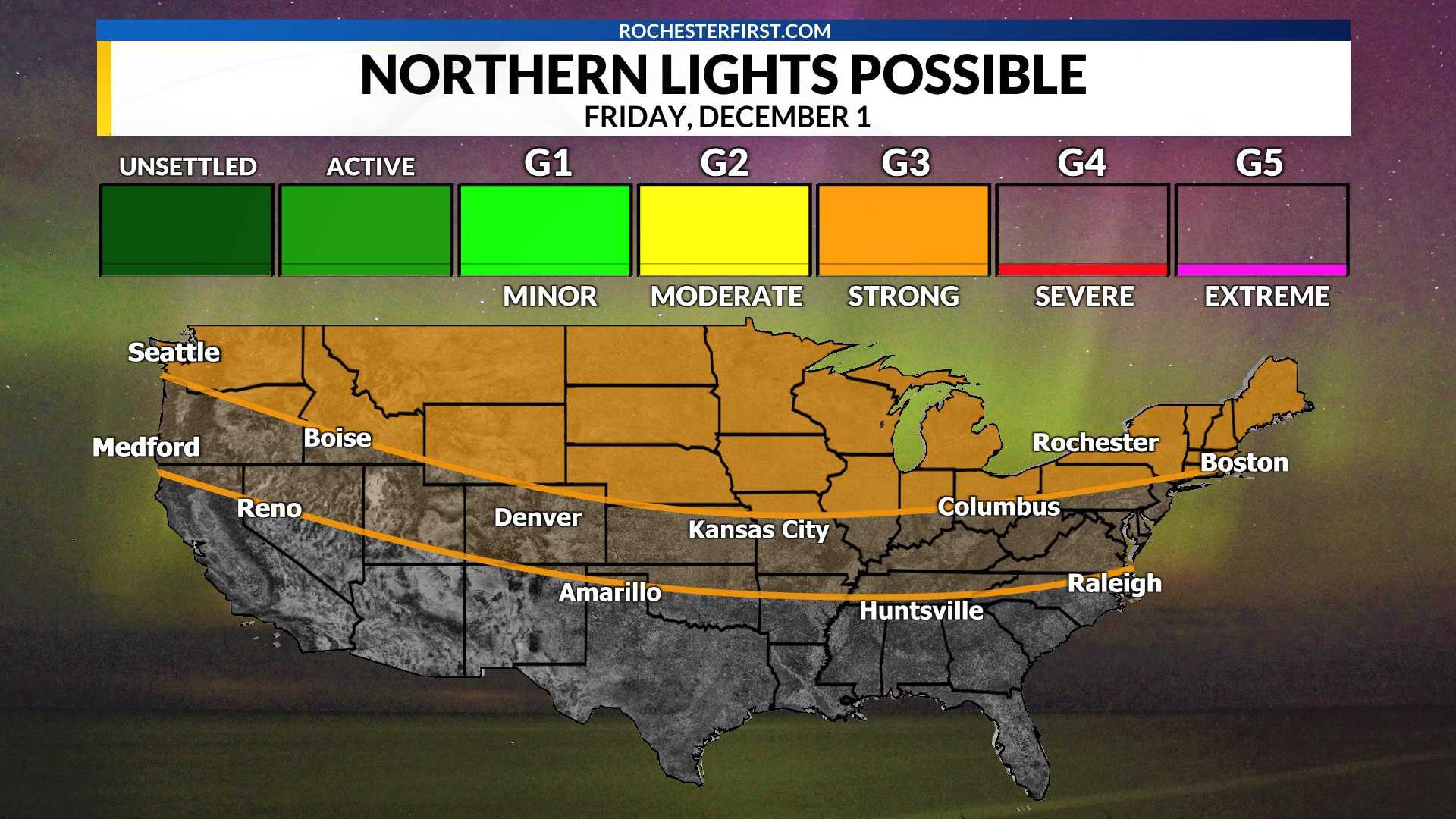News
Enhanced Forecast for Northern Lights Offers Increased Viewing Opportunities

The Space Weather Prediction Center (SWPC), part of the National Oceanic and Atmospheric Administration (NOAA), has issued an updated forecast increasing the likelihood of viewing the Northern Lights across more southerly regions this weekend. This change follows a significant solar event earlier this week, known as a coronal mass ejection, which could stimulate noticeable geomagnetic activity on Earth.
The SWPC has raised expectations for both moderate and strong-to-extreme geomagnetic storms, expanding the potential viewing window to include from nightfall tonight until sunrise on Sunday. The center suggests the prime viewing time will be shortly after dark on Saturday night, correlating with the highest anticipated Kp Index levels, a measure of geomagnetic activity. These developments could allow the auroras to be visible much farther south than usual.
The forecast reports a 30% chance of a moderate geomagnetic storm tonight and Saturday night, with even higher odds of a 35% chance tonight and 40% on Saturday for strong-extreme levels. The Kp Index, which may reach as high as 6 or 7, indicates the auroras could be seen as far south as central Lower Michigan, Indiana, Illinois, and Ohio.
However, cloud cover presents a challenge, particularly for observers in Michigan, where overcast skies and rain are expected on Saturday night. For those hoping to catch a glimpse of the Northern Lights, it is recommended to find a location with a clear view to the north, ideally situated at a high vantage point, and to start observing from 11 p.m., although the most vivid display may occur after midnight.
The SWPC has communicated these updates to inform the public of potential disruptions to navigation, power, and radio systems due to increased geomagnetic activity. Viewing the auroras is best done away from city lights and between 10 p.m. and 2 a.m. local time. Autumn, specifically around the fall equinox, which was September 22, is a particularly favorable period to observe such phenomena.
According to SWPC predictions, the Northern Lights may be visible as far south as Iowa, Oregon, and Pennsylvania, depending on atmospheric conditions. Recent maps released by the center illustrate anticipated aurora intensity over North America and demarcate the southernmost boundary where the lights may be seen.
Although the upcoming storm is classified as strong, it is not expected to match the intensity of the geomagnetic storm witnessed last May. Viewers are encouraged to stay informed about weather conditions and updates to maximize their chances of witnessing the spectacle.












